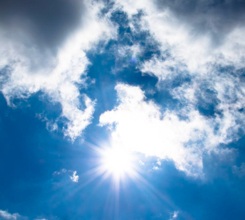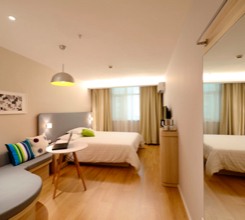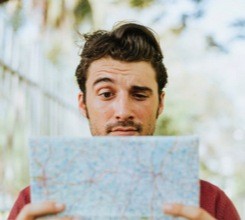How to pack for a trek?
A week in the Carpathians

It all depends on the expected conditions: should it snow? to rain? are avalanches threatening? are there thunderstorms? For each period and for each situation, it is necessary to take different equipment with you, or modify it according to the conditions, and some things can be considered universal. My list will focus on the summer, when we do not expect frost or snow, but there may be occasional showers and thunderstorms. This list is not universal and is based on many years of experience.
Equipment
Sleeping
It all depends on whether it is possible to sleep in cottages or shelters, if we have such an option, the basis is a good mat (my back is used to inflatable and another refuses), which not only increases comfort but is also excellent insulation from the cold, or you can replace the mat with a thermal insulation foil (part of the first aid kit) (we choose it depending on the expected temperature), when it should be colder, especially in spring or autumn, I usually wear a sleeping bag insert. The most important thing is, of course, the tent, which we also choose according to the expected conditions, ideally so that it is as light as possible. In case of interest, all these things can be replaced by a good hammock, which is impractical when you move above the upper limit of the forest.
Clothes
What to wear?
The basis is quality hiking pants, which are quick-drying and wind-resistant. In the summer months, it is advisable to supplement them with one more shorts. In addition, they are quality socks, and the ideal is bamboo, as they stink less and are also quick-drying, or I do not recommend saving other trekking socks here, as quality socks can prevent pressure and unnecessary sweating of the foot. The same applies to underwear, when I again recommend using bamboo underwear. For T-shirts, I recommend carrying two to three T-shirts with you on a weekly trek, which are directly intended for trekking (they dry quickly, have some wind resistance) or cotton T-shirts, I do not recommend using various low-quality T-shirts, skin problems and this is the last thing we need. In addition, I always recommend having one sweatshirt and a fly jacket (sweatshirt) with you, which are needed especially in stronger winds and also have a certain resistance to wind. In addition, I recommend that you always have something on your head against the sun, I usually carry a multifunctional scarf with me.
First aid kit
Security is certainty
The first aid kit should also not be missing in any backpack. As far as the composition is concerned, there are several differences, but from my personal experience they include: bandages (min. insects), medicines for stomach pain (black charcoal, a bottle of homemade brandy), medicines for diarrhea or a bottle of homemade .
Boarding
Something under the tooth.
The basis for eating is to have equipment in which we prepare food, ie shit, spoon, knife, stove, lighter (matches get wet easily), gas bomb, or if you can start a fire and dry paper. In most cases, I solve breakfast with oatmeal supplemented with dried fruit, raisins, nuts, which are an excellent source of energy. In addition, it is also a cup of tea, so I recommend having a mug with you (especially for a larger group, so that you miss something). In most cases, I solve lunches with a dry diet such as energy bars, or salami, bacon, bread and vegetables (peppers, onions, garlic). There is more time at dinner than during lunch, so then dried food is ideal, which does not need to be cooked for a long time, or couscous, which you just need to pour boiling water and wait, and in most cases I supplement it with what remains of lunch. Olovrant or tenth is ideally solved with fast sources of energy such as energy bars or fruits (most often apples). The drinking regime is also important and since it is never certain how many springs will be along the way, I always carry 3 liters of water with me (it is also available for washing and cooking).
Hygiene
You also need to wash
For hygiene, the basis is a quick-drying towel, which takes up a minimum of space, it is also a classic soap for me, which can be used for washing if necessary. In addition, it is dental care equipment. I do not recommend carrying shampoos, liquid soaps and similar things, either because they are unnecessary, but especially for respect for nature. In most cases, I only use water to wash the dishes and, if necessary, sand from the bottom of the stream, which can remove most of the dirt.
A few more necessary things
Or unnecessary?
Finally, a few more things that I always carry with me, but do not fall into any of the already mentioned categories, but it is another equipment from my point of view. The raincoat together with the backpack cover form the basis, as a storm can come at any time. Sunglasses and if you have more sensitive skin, I also recommend sunscreen (there is nothing worse than getting sunburn) and as I mentioned something on the head when wearing clothes. In addition, they are tourist poles without which I can not move anywhere and also I will not move anywhere even without my camera (I do not recommend an SLR camera, as they are much heavier than compacts). Although we all already have GPS with maps in the mobile, I am a supporter of having a paper map with me (you can also smoke it, or …). If there is a risk of rainier weather and there could be a lot of mud in the area, I recommend having sleeves with you, and at higher altitudes the temperature may drop unexpectedly, so I also wear a hat and gloves with me. We all know that quality hiking boots are also the basis, but without laces they are useless, so I always carry spare laces with me. Since we are in nature even at night, I also consider the headlamp to be an important part of the equipment.
What to leave at home
Tanzania's smallest national park
I do not recommend carrying things that are heavy and thanks to them a backpack should weigh more than 15 kg, in case you get above this limit, I recommend repacking and start throwing a few things and start again. It's only been a week, so I don't recommend carrying even power banks or solar chargers, which are an unnecessary burden for such a short time. Everything that has a heavy packaging, which must then be carried with it, such as cans, glass bottles. And I also do not recommend carrying anything that harms nature with its use, yet we do not want to destroy it.



